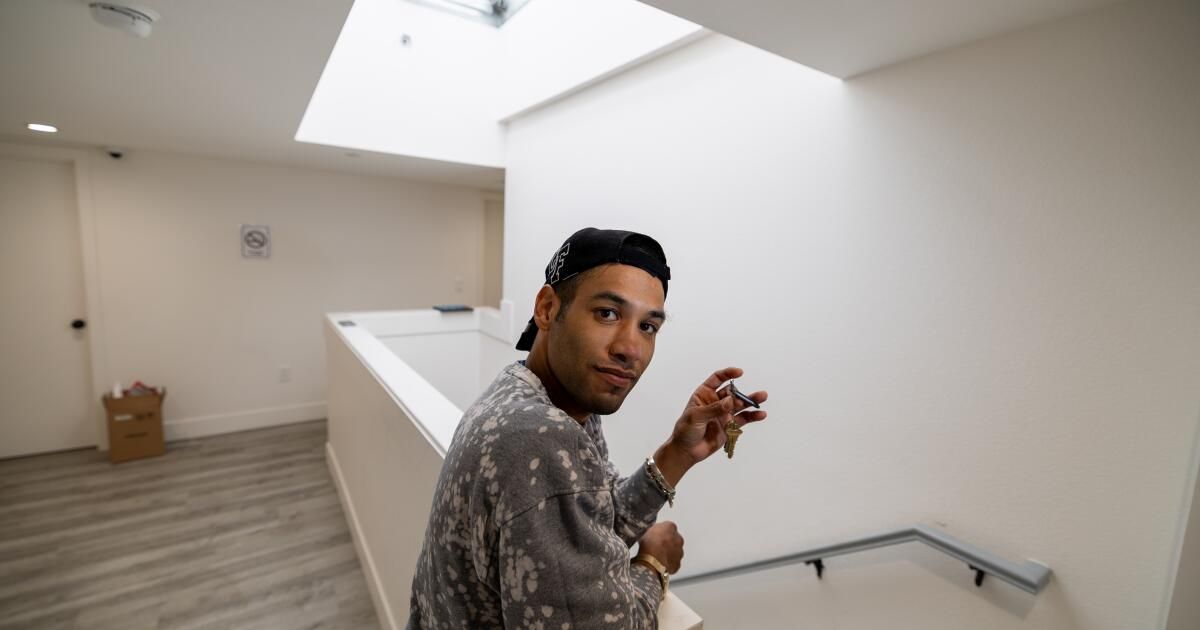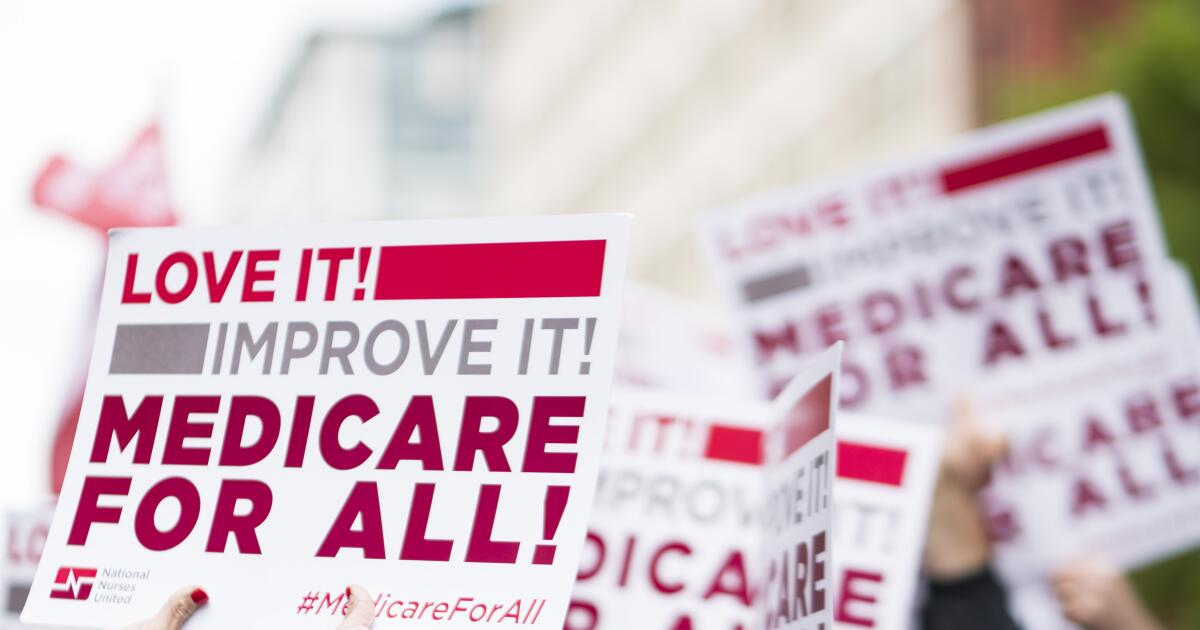When I began to cover the lack of housing for the Los Angeles Times editorial board, a service provider told me something that has guided me to this day: “If you know a homeless person, you have met a homeless person.”
So, in addition to writing about homeless people and fighting for housing, I wanted to hear the stories of the people I found in my neighborhood and in the city.
I wrote about the well -kept man who lived in an RV outside the building of my condominium with his spongy white dog. I urged my neighbors worried to help you get services, not tow it. (A neighbor, a lawyer, had the kindness of doing a free legal job for him). He finally left the street and never returned.
I met a woman sitting on a sidewalk outside a wine shop in an industrial section of Cotner Avenue an afternoon before the On July 4, 2019. He was called Michelle, he was about 50 years old and told me that he just wanted a refuge bed to spend the night. I just left a hospital, he still had his hospital identification bracelet. He didn't have a cell phone because a former abusive fiance had broken him, he said. I called the direct non -profit aid line, 211, but the only thing that operators could find for it was a bed in the Antílope valley, far from where we were on the west side. After a while, Michelle collapsed and said he wanted to return to the hospital.
The owner of the wine store and an employee left to see what was happening. I hoped they complained. Instead, they asked how they could help. I called an Uber to take her to the hospital. When the car arrived, the store owner pressed cash in the driver's hand, asking him to take care of her. When I went back to work after the holidays, Michelle had called my phone on the phone and left a message thanking me and saying that it was fine. I never heard about her again.
The Los Angeles homeless service authority now has a computerized system that tracks many refuge beds throughout real time. Service suppliers this month were implemented and will be available for the DIRECT LINE SYSTEM 211 in July.
On another occasion, I became friends with a carefully dressed man who sat on a bank and politely stained out of a Whole Foods store in Santa Monica. James, about 50, had lost a job in a great retailer, and when its unemployment benefits were sold out, he was homeless. James told me that all I wanted was to rent a room in a house somewhere. He observed how luxury cars passed and said that surely someone had an empty room to offer him. Finally, a service provider was found by a room in a six -bedroom apartment west of the USC. I visited once and brought him edible. He shared the kitchen and dining room with the rest of the residents. In a moment we listen to a woman shout at someone. “The people here are crazy,” he told me with some disgust. This was not the room of his dreams. I lost contact with him after that visit.
And then there was Joshua, a homeless man with whom I kept in touch for years. I was the board of a jury that found him guilty of a minor battery charge on a metropolitan train in 2019. He was curious about his life and why he had gotten into trouble. After the trial ended, I spent hours on the phone with him, sporadically, while violating his probation, he returned to jail and then emerged again, usually with a new phone number. He found a trade school and took computer classes wanting to learn some kind of skill that would help him find a job. Finally, he said, an instructor told him that he was not too prepared to take the course and that she could not spend the time needed to help him catch up.
These days, there is general relief ($ 221 per month) and Calfresh's food benefits delivered to an EBT card. He has spent nights sleeping in banks and trains and more recently in the buses where he has found comprehensive drivers who chat with him and look the other way when he does not pay the rate.
I repeatedly urged him to go to a shelter, but he refused, saying they were not safe. I have listed the reasons why it was worth trying.
“I know you want better for me, Miss Hall,” he said once, listening to my exasperation. “It won't always be so.”
I want better for all of them: the people I met and the ones I never did. Not everyone?
They do not have to be heroic figures to deserve homes, more than the people who already live in homes are heroic. I cannot guarantee that any of these people has even taken a nap if your grass or, what is worse, went to the bathroom. But such cases only underline that society must provide the basic needs of each person to meet dignity: eat, sleep and other bodily functions. (And I have written editorials who ask for more public baths throughout the city).
We should want something better for all people who are so impoverished, that they became fashionable by mental illness or substance abuse, but especially for poverty. They are hindered by an economy in which housing is a merchandise, an investment that is a value in value without reason beyond that is scarce and, therefore, more and more valuable for its owner and decreasingly accessible to the large number of angels who cannot pay thousands of dollars a month for rent.
There are 75,000 people without bone in Los Angeles County. (Around 45,000 of them live in the city of Los Angeles) All need permanent homes.
Once I talked to an assembly of students in a private school with Emily Martiniuk, a woman who previously has no home. She began asking the students, in primary and secondary degrees, what they wanted to be when they grew up. The hands shot while marking several professions. “Now,” he said, “How many of you want to be homeless?”
Each trip to the lack of housing is different. The only thing that every non -sunk person shares is this: nobody intended to be homeless. In the case of Martiniuk, paralyzing diseases and depression made him lose his job and his family. “My life collapsed,” he told the students. But with medical care and help from social workers, he found permanent support housing, then another apartment subsidized by a housing coupon, and now often speaks to several elected groups and officials about their experiences.
I have spent years and thousands and thousands of words arguing measures that would increase funds for both services and home that homeless people need, the type of services that helped Emily. I have scolded people to oppose the homes for homeless people in their neighborhoods, even when they voted for the measures that would put aside funds for it, and hugging the anti -pampism ordinances as the way to get the homeless people out of their neighborhoods.
Anti -pampism ordinances do not make people disappear. They are simply pushed to another person's neighborhood.
“Housing for homeless people” is an inappropriate name, really. Instantly eliminates the problem it names, because as soon as people enter their apartments, they stop being homeless. Those who suffered mental illnesses or substance abuse, and overwhelming poverty, will still have those struggles, of course, but now they can face them with the knowledge of a safe place to sleep every night. That matters. Think about a problem that you have faced, and how much more difficult it would have been if it had not taken place to sleep, shower, store your possessions or use the bathroom.
In this last piece, I write as a member of this honorable editorial board that has long worried about people and their destiny in Los Angeles and beyond, I challenge you to worry about providing homes to the people who need them. I challenge you to welcome new affordable homes when it is proposed in your community, because as an angel that presents this crisis, you know how many lives could change the house: how many lives could save. They hold the politicians of Los Angeles not insisting that they maintain these developments outside their neighborhood, but by demanding that they build more of them in all our neighborhoods.
Angels cannot prosper if there is a community of people safely in homes and another forced sidewalks.












